Are you struggling to get great results from your Facebook ads? Wondering if you're making mistakes that are hurting your campaigns?
We asked some of the industry's top Facebook advertising experts to share the mistakes they see most often and how you can avoid making them.
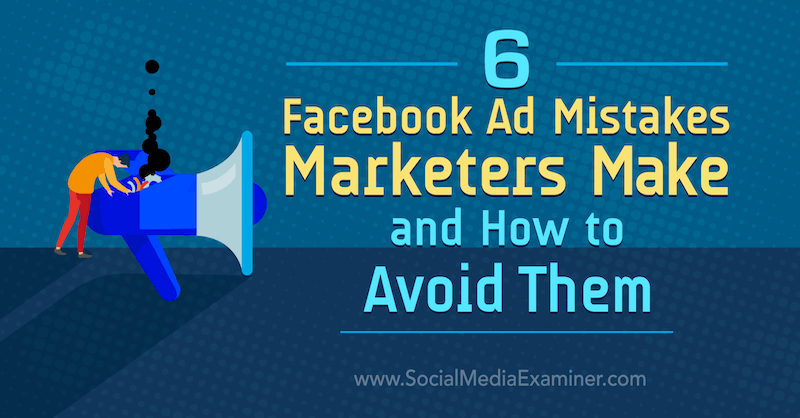
#1: Optimizing Your Facebook Ads Too Often
 Most Facebook advertisers are constantly touching their ads (or “turning knobs” as I like to call it) thinking that constantly changing bids, budgets, and targets is equivalent to making faster progress. What actually happens is that each optimization resets your ad rank and puts your ad right smack back to the start of the learning phase.
Most Facebook advertisers are constantly touching their ads (or “turning knobs” as I like to call it) thinking that constantly changing bids, budgets, and targets is equivalent to making faster progress. What actually happens is that each optimization resets your ad rank and puts your ad right smack back to the start of the learning phase.
This is the equivalent of planting a seed, digging it up after 5 minutes to see how much it's grown, replanting it, and then digging it up again 5 minutes later.
I've heard this lament in almost every one of the last dozen meetings we've had with Facebook.
In a similar vein, making multiple ads doesn't necessarily give you more chances to win. You want to get to 50 conversions per ad set per week. If you're frittering your budget across dozens of ads, there isn't one single ad with enough power (a strong conversion signal that overcomes statistical noise) to produce a winner.
That means you need to target larger audiences by pooling custom audiences and relying upon lookalike audiences of the custom audiences that convert.
I realize this is 180 degrees from what I preached 5 years ago. But today, the algorithm is smarter and the cost of traffic is much higher. Additionally, there are more ad placements on Facebook than we can manually optimize. You want Facebook to choose the mix for you based on your setting for your actual cost per lead and cost per conversion.
Facebook summarizes these techniques in something they call the Power 5. The way we think about it is that you build three-stage funnels of Awareness, Consideration, and Conversion. Then find your evergreen winners at each stage and keep putting more money into them.
Dennis Yu is the founder of BlitzMetrics—one of the first Facebook ads agencies in the industry.
#2: Falling Back on Imprecise Targeting
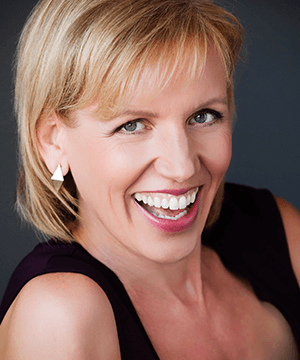 One of the biggest mistakes I see advertisers making is what I call “lazy targeting,” which results in the wrong ad reaching the wrong audience.
One of the biggest mistakes I see advertisers making is what I call “lazy targeting,” which results in the wrong ad reaching the wrong audience.
Beginner advertisers might simply hit the Boost button and only target fans of their page when perhaps there's a large number of fans who are no longer relevant or weren't relevant in the first place. Instead, it's better to go into Ads Manager and refine your audience, ideally starting with a good custom audience made from your existing customers, website traffic, and/or people who've previously engaged with you.
If you're a slightly more advanced advertiser using Facebook Ads Manager, lazy targeting might take the form of not making good use of exclusion audiences, and therefore continually targeting people who have already purchased what you're offering.
Get World-Class Marketing Training — All Year Long!
Are you facing doubt, uncertainty, or overwhelm? The Social Media Marketing Society can help.
Each month, you’ll receive training from trusted marketing experts, covering everything from AI to organic social marketing. When you join, you’ll also get immediate access to:
- A library of 100+ marketing trainings
- A community of like-minded marketers
- Monthly online community meetups
- Relevant news and trends updates
Or it might look like picking one interest and assuming everyone in that audience is a good target. I've been on the receiving end of this, where, for example, an advertiser targets me offering a tool for realtors as if I'm in the real estate business (which I'm not!). Instead, you'll find your advertising dollars will yield much better results with properly refined demographic targeting and numerous overlapping interests and behaviors.

That said, your audience doesn't always have to be laser-targeted and narrow. If you're initially looking to raise awareness at the beginning of a lead capture and nurture campaign, then targeting a broad audience is totally fine. Just remember that relevance is key. The last thing you want is for people to report your ad because negative feedback on an ad can dramatically decrease its performance.
Mari Smith is known as the “Queen of Facebook,” and is one of the world's foremost experts on Facebook marketing.
#3: Focusing on Your Solution Rather Than Your Prospect's Pain Point
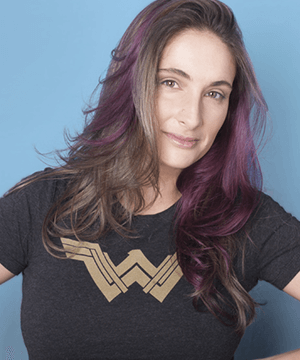 A big Facebook ad mistake I see time and again is creating ads that are solution-focused instead of people-focused.
A big Facebook ad mistake I see time and again is creating ads that are solution-focused instead of people-focused.
Many ads people see in their Facebook news feed focus on some sort of promotion (e.g., a sale, a limited time offer, etc.). The problem is that most of the time when someone sees your ad, it's the first time they've encountered your business.
With thousands of offers and deals and competitors out there clamoring for your prospect's attention and time, the only way to stand out is to make your ad about the customer and not about the solution you're selling. This means telling your customer's story: emphasize their pain, their challenges, and the outcomes they wish for in your ad.
You have less than 3 seconds to grab someone's attention and convince them to click on your ad and learn more, and the only way to do that is by making it about them, not yourself.
Talia Wolf, founder of GetUplift, helps companies optimize their messaging using emotion and psychology so they can understand why people buy from them.
#4: Over-Relying on Facebook Campaign Budget Optimization
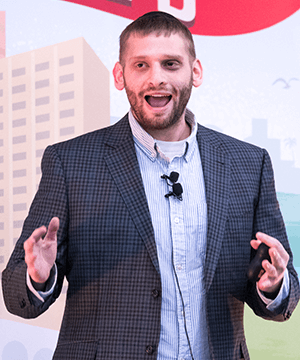 Before the Facebook Campaign Budget Optimization tool was announced, you as the advertiser were in control of how much money was spent per day targeting any specific audience within your Facebook ad campaigns. Now with CBOs, Facebook will automatically divide the spend for you based on how they believe each audience will perform.
Before the Facebook Campaign Budget Optimization tool was announced, you as the advertiser were in control of how much money was spent per day targeting any specific audience within your Facebook ad campaigns. Now with CBOs, Facebook will automatically divide the spend for you based on how they believe each audience will perform.
The way this works is that Facebook looks at the audiences throughout the entire campaign and finds the users they believe to be the most likely to convert on your objective. If you want video views, Facebook will look for the largest group of people who will watch your videos for the lowest price. If you want website visits, Facebook will find the people who click on the most links and show them your ads. If you want to sell your product, Facebook will find the most engaged buyers within your target audiences and show them your ads first.

Discover Proven Marketing Strategies and Tips
Want to go even deeper with your marketing? Check out the Social Media Marketing Podcast! Publishing weekly since 2012, the Social Media Marketing Podcast helps you navigate the constantly changing marketing jungle, with expert interviews from marketing pros.
But don’t let the name fool you. This show is about a lot more than just social media marketing. With over 600 episodes and millions of downloads each year, this show has been a trusted source for marketers for well over a decade.
In theory, this can be amazing. Before CBOs, you would spend a nice amount of money to run ads to a list of interests and a few lookalike audiences—each within their own ad set—in an attempt to find the audience most likely to buy. Today, run ads to these same audiences within a CBO campaign and Facebook will do that work for you for much less!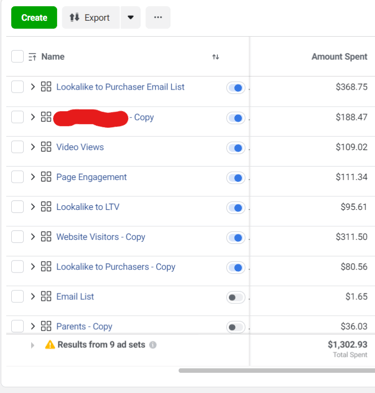
But there's one large issue with this type of campaign: warm audiences.
When you run campaigns with a mixture of cold and warm audiences, Facebook doesn't necessarily know how warm any given audience is within your campaign. This means that while Facebook might be targeting the users most likely to buy in general, Facebook isn't always targeting the audience that's most likely to buy from you specifically.
To illustrate, I started a campaign placing nine ad sets in a single campaign. After several days, the email list (the best audience the client had) had only spent $1.65.
I created a second campaign to target only the email list and the ads spent just short of $700, generating 21X return on ad spend (ROAS)! If I had relied solely on Facebook CBO, we would have been left with much lower ROAS and barely any spend toward our best-performing audience.

While CBO campaigns can be incredibly powerful, if not used correctly (with bid caps, minimum/maximum daily spends, and proper tweaking) Facebook could be putting your money in all the wrong places.
Azriel Ratz, a Facebook ads consultant with a genius for analyzing Facebook ads, has developed a proven system that helps marketers determine which ads are their best performers.
#5: Discounting Custom Lifetime Value in Favor of the ROAS Metric
 The biggest mistake advertisers make when measuring ROAS on Facebook is focusing only on the Purchase ROAS metric.
The biggest mistake advertisers make when measuring ROAS on Facebook is focusing only on the Purchase ROAS metric.
Purchase ROAS only reports the immediate purchase value at that specific moment when you assess the data. To accurately measure the real impact of your Facebook advertising (or any marketing channel, for that matter) is to look at your customer lifetime value, which goes far beyond their first purchase. I call it “true ROAS” and it's usually a much higher level of return due to the higher customer lifetime value.
Suppose you spend $20,000 in a month on Facebook ads with an average purchase value of $100 and a cost per purchase of $25. Those ads generate 800 purchases (from new customers) with a total purchase value of $80,000. That's a 4X ROAS. Pretty good.
However, if on average your customers spend an additional $120 in the next 12 months, the purchase value increases from $100 to $220. When you measure your true ROAS, those 800 new customers were actually worth $176,000 to your business because they each spent $220. Therefore, spending $20,000 to acquire them makes your true ROAS 8.8X.
When it comes to making ad spend decisions and planning your ad campaigns, don't just look at your immediate ROAS; instead, calculate your true ROAS.
Charlie Lawrance is the founder and CEO of Gecko Squared, a digital marketing agency that specializes in Facebook advertising.
#6: Settling for a One-Size-Fits-All Placement Approach
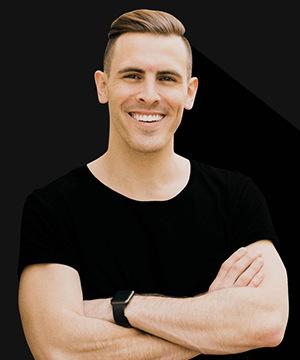 In a mid-2019 world, your Facebook feed is like a highway where your audience's thumbs are the cars and your video ads are the billboards they speed past.
In a mid-2019 world, your Facebook feed is like a highway where your audience's thumbs are the cars and your video ads are the billboards they speed past.
If you're speeding down a literal highway at 65mph, you've only got about 10 seconds or so to pay attention to any given billboard. The same rationale applies when you're speeding down the Facebook feed with your thumb. That is, you've only got a limited amount of time to pay attention to a video ad before you continue your journey to the next dopamine destination.
Naturally, this begs the question: How do you get people to slow down and pay attention to your video ad?
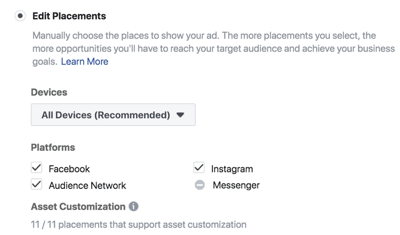 Your video ads must be optimized for the correct format and placement.
Your video ads must be optimized for the correct format and placement.
This may sound like a no-brainer, but I'm still surprised at the number of advertisers who don't optimize their video ads for the platform or device on which they're being shown. If you want your ads to have a higher chance of stopping people's thumbs in the news feed, customize your creative to fit the placements you're running your ads on. I recommend Facebook's official video requirements cheat sheet, which you can find here.
Along the same aesthetic lines, you should always upload the highest-resolution video content you have available. If you're spending money on running video ads, the last thing you want is to have a potential customer blind your ad because your content is pixelated. Facebook has an incredibly comprehensive guide to the creative specs and technical requirements for video ads and more—check it out here.
Finally, 9 times out of 10, clients who agree to the first two points say, “we just don't have the time to action all of that creative.” I'm sympathetic to this disposition—a lot of clients are trying to fill the role of a full-service creative studio either by themselves or with a very small team. That said, there are ways to be smart about this, and it starts with an optimized workflow that will help you create video for multiple platforms.
Paul Ramondo teaches entrepreneurs how to generate leads and sales using Facebook ads and digital marketing funnels.
What do you think? Are you making any of these mistakes? Share your thoughts and questions in the comments below.
More articles on Facebook advertising:
- Find 6 secrets to writing Facebook ad copy that converts.
- Learn how to set up Facebook Analytics and Facebook Attribution.
- Discover how to successfully target cold audiences with Facebook ads.
Attention Agency Owners, Brand Marketers, and Consultants

Introducing the Marketing Agency Show–our newest podcast designed to explore the struggles of agency marketers.
Join show host and agency owner, Brooke Sellas, as she interviews agency marketers and digs deep into their biggest challenges. Explore topics like navigating rough economic times, leveraging AI, service diversification, client acquisition, and much more.
Just pull up your favorite podcast app, search for Marketing Agency Show and start listening. Or click the button below for more information.

